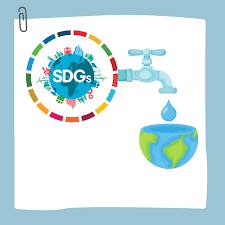Water and Sanitation
SDG 6 has eight targets. Six of them are to be achieved by the year 2030, one by the year 2020, and one has no target year.[16] Each of the targets also has one or two indicators which will be used to measure progress. In total there are 11 indicators to monitor progress for SDG6.[17] The main data sources for the SDG 6 targets and indicators come from the Integrated Monitoring Initiative for SDG 6 coordinated by UN-Water.[18] Each government must decide how to incorporate them into national planning processes, policies and strategies based on national realities, capacities, levels of development and priorities.[18]
The six "outcome-oriented targets" include: Safe and affordable drinking water; end open defecation and provide access to sanitation and hygiene, improve water quality, wastewater treatment and safe reuse, increase water-use efficiency and ensure freshwater supplies, implement IWRM, protect and restore water-related ecosystems. The two "means of achieving" targets are to expand water and sanitation support to developing countries, and to support local engagement in water and sanitation management.[3]
The first three targets relate to drinking water supply, sanitation services and wastewater treatment and reuse.[16]
An SDG 6 Baseline Report in 2018 found that less than 50 per cent of countries have comparable baseline estimates for most SDG 6 global indicators.[18]: 31 One reason is that many SDG 6 global indicators are new, and most have only limited time series, making it difficult to determine rates of progress.[18]: 31












No comments